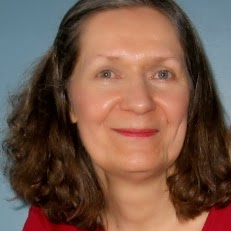
By Marie Engen, Boomer & Echo
Special to the Financial Independence Hub
Canadian seniors have two national income support payments – Old Age Security (OAS) and the Guaranteed Income Supplement (GIS). These are not pension plans as such because they are non-contributory and financed out of general revenues. Employment history is not a factor in determining eligibility. You can receive OAS pension and benefits even if you have never worked, or are still working.
Old Age Security
The current Old Age Security pension came into effect in 1952, with a maximum benefit of $40 a month. It replaced a program of benefits that was income or “means” tested.
Everyone who has been a resident of Canada for at least ten years is eligible to collect OAS starting at age sixty-five. Normally, you qualify for the full amount only if you have been a resident for at least forty years after turning 18. Partial payments are calculated according to each complete year of residence in Canada after age 18.
Starting in April 2023, the age of eligibility will increase from 65 to 67 over a six-year period. Full implementation will be in effect by January 2029. This change will affect people born in 1958 or later.
You can defer your payments for up to 60 months after the date you become eligible. The payments will increase 0.6% per month to a maximum of 36%.
OAS payments are indexed to inflation and are adjusted quarterly. For the third quarter of 2015, the maximum monthly payment is $564.87 per month.
OAS was originally intended to be a universal program, providing an income safety net to all Canadian seniors. In 1989, the Conservative government under Brian Mulroney changed the rules by introducing what it called the “social benefits repayment tax” – now better known as the dreaded “clawback.”
If a person’s net income exceeds a certain level – called a threshold – they must repay some, or all, of their OAS benefits at a rate of fifteen cents for every extra dollar received. For the 2015 income year, the clawback applied to anyone whose net income exceeds $72,809 up to a maximum of $117,954.
Tom’s income is $80,000. He is $7,191 over the threshold, so $1,078.65 (7191 X 0.15) must be repaid.
GIS/Allowance
The Guaranteed Income Supplement (GIS) is available to anyone who receives OAS and whose income falls below a certain level. In the third quarter of 2015, the maximum allowable income to receive a benefit is $17,136 for a single person and $22,608 for a couple who both qualify for OAS.
For every dollar of income over $3,500, you lose fifty cents worth of GIS benefits.
Income in this case includes CPP, OAS, annuities, pension plan payments, RRIF and RRSP withdrawals, employment income and investment income.
The Allowance is designed for low-income people between sixty and sixty-four who have a spouse receiving OAS.
If you are sixty to sixty-four years old and are widowed, you may be eligible to receive the Allowance for the Survivor.
To calculate the amount of your monthly benefit check here on Service Canada’s web site.
Provincial benefits programs
To assist low-income seniors, some provinces offer benefits to qualifying applicants. All programs have different eligibilities. Here are a few examples:
- Alberta – Alberta Seniors Benefit Program offers a monthly income up to $210.
• British Columbia – The Seniors Supplement monthly payment tops up OAS/GIS to BC Welfare levels.
• Ontario – Guaranteed Annual Income System tops up income for those who receive GIS.
• New Brunswick – An annual amount of $400 per household is paid to those who receive OAS.
Usually applicants must be 65 or older, be a resident of the province (lengths of time differ), and with total income below the amount guaranteed by the province.
If eligibility requirements are met, no application is necessary. You will automatically receive payments.
For more information about provincial programs contact the applicable Provincial Ministryof Revenue.
Conclusion
It’s possible that one or more of these benefits will supplement your income in your retirement years.
Marie Engen is the “Boomer” half of Boomer & Echo. In addition to being co-author of the website, Marie is a fee-only financial planner based in Kelowna, B.C. This article originally ran at the Boomer & Echo site and is republished here with permission.

